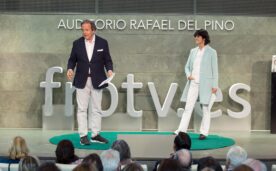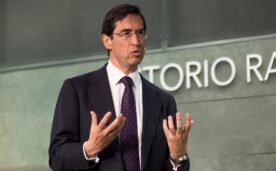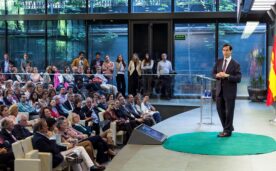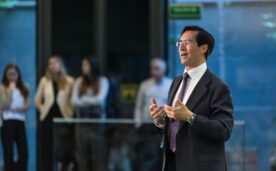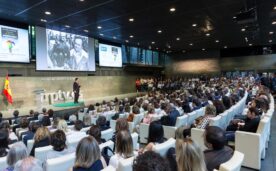Mindfulness. The art of keeping calm in the midst of the storm.
Summary:
On 9 May 2017, Mario Alonso Puig gave a conference at the Rafael del Pino Foundation on "Mindfulness. El arte de mantener la calma en medio de la tempestad", on the occasion of the presentation of the book of the same title of which he is the author. Mario Alonso Puig, member of the New York Academy of Sciences and the American Association for the Advancement of Science, began his speech by indicating that we are in a world of disruptive change to which we have to adapt. To do so, he proposed a journey that begins in life itself and continues in ancient philosophy and medicine until we come to recognise that deep dimension of the human being that teaches us that we have the resources to face these challenges, to give meaning to our lives. Life is presented to us in the form of crossroads. The information available to us is not enough to know which path to take. But within us there is a wisdom that knows where to go. At that moment it becomes clear and we know which path to take. As soon as you open yourself to life, you realise that life surprises, enchants, disorients and disorients, but that it has a better framework for orientation than the mind. 2,500 years ago, Greek physicians discovered that there was something in their relationship with the sick that activated and made them well. They called it the medical art, the art of healing through words. Hippocrates transformed our view of medicine by saying that it is the natural forces within us that cure disease. He also said, first, do no harm. At the same time, in Nepal, Prince Siddhartha, that is Buddha, could see the suffering of others and said to himself that he had to do something. Buddha is a guide, an investigator of the human mind, and he tells us that in order to teach others, we must first set ourselves right. Simultaneously, in China comes Lao Tse, the most renowned Chinese philosopher, who said: if you are depressed, it is because you are living in the past; if you are full of anxiety, it is because you are living in the future; if you are at peace, it is because you are living in the present. The World Health Organisation warns of the worrying growth of anxiety, depression, diabetes and obesity, especially childhood obesity, in the world. And it says that health is not only the absence of disease, but also the psychological, social and emotional well-being of the human being. He therefore asks us to reflect on the need to rethink the way we live. Human beings are homo sapiens sapiens, but they also have a homo demens dimension that affects homo sapiens, as we shall see. There are many cardiac arrhythmias and hypertensions that medicine does not know where they come from. On the other hand, Tibetan monks discovered how to stop the noise of the mind through meditation and activate the topototrophic nucleus of the hypothalamus. When this is applied to the sick, blood pressure and arrhythmias are reduced. Homo sapiens sapiens knows that life is a gift. In contrast, homo demens believes that his mental world is above the real world. When that altered mental world collides with the real world, one feels threatened and believes that the problem is with the real world, not the mental world. However, most of the pressure is generated by the mental world, which creates so much noise that it inhibits the part of the brain that allows us to solve the challenges we face. When that mental noise is reduced, we begin to see opportunities where before we only perceived problems, difficulties and threats. The mind limits us so much that we believe that what we see is all there is, when the truth is that the real world is much wider. So if we can live in three dimensions, why live in two? Most of the time, mental noise is reflected in the loss of attention and is one of the causes of inner tension. The practice of mindfulness begins to change all this to the extent that it changes the structure of the brain and improves memory and fear control. These changes can be registered within a few months. And love has the same effects
The Rafael del Pino Foundation is not responsible for the comments, opinions or statements made by the people who participate in its activities and which are expressed as a result of their inalienable right to freedom of expression and under their sole responsibility. The contents included in the summary of this conference are the result of the debates held at the meeting held for this purpose at the Foundation and are the responsibility of their authors.
The Rafael del Pino Foundation is not responsible for any comments, opinions or statements made by third parties. In this respect, the FRP is not obliged to monitor the views expressed by such third parties who participate in its activities and which are expressed as a result of their inalienable right to freedom of expression and under their own responsibility. The contents included in the summary of this conference are the result of the discussions that took place during the conference organised for this purpose at the Foundation and are the sole responsibility of its authors.
